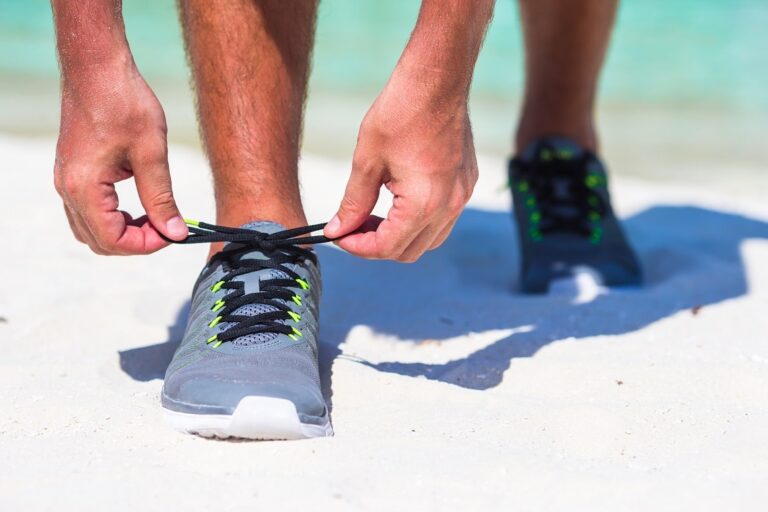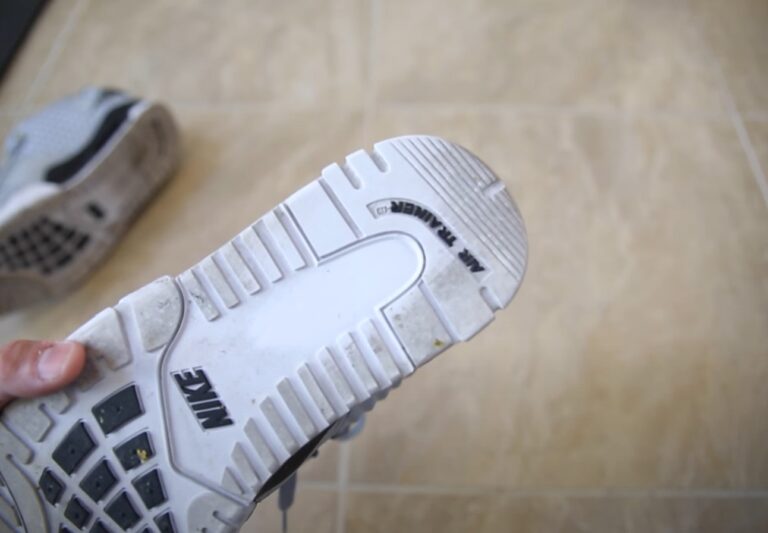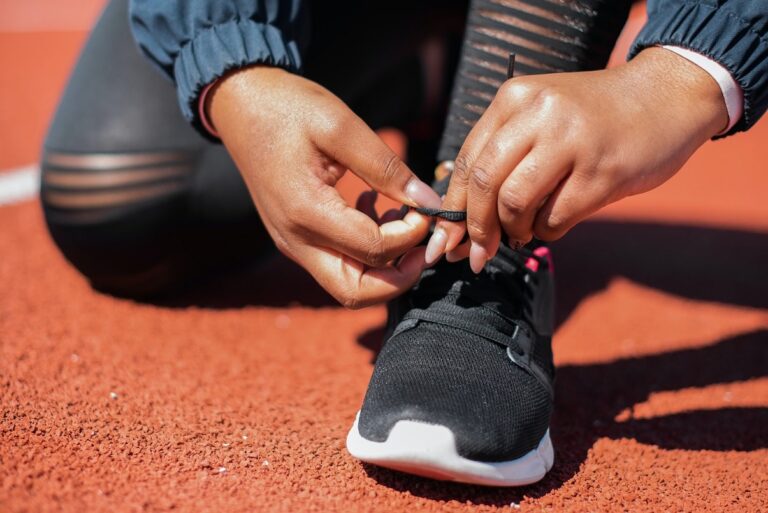WHY ARE RUNNING SHOES SO UGLY?
There’s been an enduring fashion mystery that has puzzled generations — why are running shoes so ugly? Is it a sacrifice we runners make in the name of performance, or is there something more sinister going on here? Let’s explore this phenomenon and try to uncover some answers. From the design process to industry monopolies, let’s dive into the murky depths of running shoe aesthetics and see how this unpopular trend came about in the first place.
Understand the science behind running shoe design
Learning the science behind running shoe design can be invaluable for staying injury-free while enjoying a lifetime of running. From cushioning and shock absorption to tread and grip, runners should understand how their shoes work with their natural biomechanics so they can select the right type of shoe for them. Innovations in running shoes have enabled better stability and balance as well as natural movement of the foot. Different brands also feature various materials that influence performance and wear differently depending on an individual’s feet or gait style. Ultimately, understanding the components behind running shoe design can help runners take the next step in protecting their feet from wear and tear – allowing them to achieve their full potential with every run.
Explore fashion trends in running shoes over the years
From the classic white-on-white or all-black sneakers of the 80s to today’s colourful and varied designs, running shoes have come a long way. Looking back to the 80s, we can see clearly how the bulky design of shoes was meant for providing support. The up and coming 90s saw more intricate designs as available materials made running shoes lighter without compromising on stability. Into the 2000s, designers began taking notice of street fashion culture and started exploring ways to combine performance and fashion. This shift has been taken even further with new materials being used that complement vibrant soles and uppers while still not affecting their functionality. Trends in running footwear have certainly evolved over the decades, becoming more stylish while also remaining practical and focused on functionality.
Discover the benefits of wearing high-performance running shoes
Wearing high-performance running shoes can be one of the best investments you make if you’re a dedicated runner. Not only are these shoes designed with special features to handle what runners put them through, but they also provide extra support and cushioning for minimized injury risk. They promote better form and technique, allowing for an easier, more efficient stride. Even if you’re just getting started, selecting a pair of high-performance running shoes can give you an edge that traditional sneakers cannot match — plus, they look great too! For anyone serious about their running, wearing running shoes made with performance in mind is a step in the right direction.
Look into how different sports use different types of footwear
There are many aspects to consider when examining how various sports utilize differing types of footwear. As each sport calls for different types of movements, the type and style of shoe needed can also vary depending on the desired outcome. From basketball sneakers with extra cushioning for jumping and quick stops to water-resistant running shoes for more rugged terrain, specific sports require specialized footwear in order to optimize performance. Moreover, the shape and elements of a shoe’s sole can help protect athletes from injury while allowing them greater agility during their activity. It is no wonder that professional athletes sand amateurs alike take such care in selecting shoes that best fit their needs – it could make all the difference when they aim to come out on top!
See how companies are using technology to make more stylish running shoes
As technology continues to revolutionize everyday life, it is no surprise that it is also influencing the world of running shoes. Today, companies are utilizing a combination of 3D scanning and printing as well as computational design software to create shoes that look stylish while remain comfortable and supportive for all types of runners. This allows users to custom-create running shoes with desired colors and materials, providing a truly personalized experience. Shoes created using this technology not only look amazing but utilize innovative design processes which allow designers and makers to create high-performance shoes in a fraction of the time usually necessary for this type of product. Ultimately, these modern designs are taking the market by storm and will surely change the way we approach buying running shoes in the future.
Examine the pros and cons of buying fashionable vs. functional running shoes
A good pair of running shoes may be the most important purchase for a runner; but with so many types and styles available, how does one determine which kind to buy? When making this decision, it is important to consider both the pros and cons of buying fashionable versus functional running shoes. On the one hand, purchasing a more fashionable pair of shoes allows runners to feel confident in their appearance when engaging in their workout. However, compromising style for function can be beneficial for those who run on a regular basis because the focus is placed on proper support and cushioning. Ultimately, runners must reflect on what is more important to them – looking good or feeling good – when making this decision.
Pros and cons of buying fashionable vs. functional running shoes:
Fashionable Running Shoes:
Pros:
- They can be stylish and trendy.
- They can be a great option for light jogging or casual wear.
Cons:
- They are often not designed for running or athletic performance.
- They may not provide adequate support, cushioning, or stability needed for running.
Functional Running Shoes:
Pros:
- They are designed specifically for running, providing the necessary support and cushioning for optimal performance.
- They can help prevent injuries and improve athletic performance.
- They offer various features such as midsole foot cushioning, arch support, and motion control for different types of runners.
Cons:
- They may not be as fashionable as other types of shoes.
- They can be expensive, especially those with advanced features.
Conclusion
In the end, it’s important to understand that both fashionable and functional running shoes have their pros and cons. While fashion-forward sneakers may not be as comfortable or supportive, they can help boost your confidence on the track or trail. On the other hand, high-performance running shoes offer improved stability, cushioning, and breathability which can make all the difference when training for a race. No matter which you prefer, always choose a shoe that fits your needs the best. Whether you’re looking for style or substance, there is definitely an option available for everyone. With technology evolving every day and new designs appearing on store shelves nearly every day, you won’t ever be short of choices for your next running shoe purchase.
FAQs
Q1: Why are running shoes so chubby now?
A: Running shoes have changed a lot over the years, and modern running shoes are noticeably chubbier than their predecessors. This is because of advances in design and technology.
First, running shoe manufacturers have incorporated more cushioning into their designs to provide better shock absorption and comfort for runners. The extra cushioning adds bulk to the shoe, resulting in a chubbier look. Additionally, modern running shoes often feature thicker midsoles to help support the foot and reduce fatigue while running. This added material also contributes to the chunkier look of today’s running shoes.
Finally, many modern running shoes are designed with additional stability features that help keep your feet in place as you run. These features may include extra foam layers or plastic elements that add extra bulk to the shoe design. All of these components combine to create a thicker, chubbier silhouette than what we saw in earlier generations of running shoes.
Q2: Why are on running shoes bad?
A: Running shoes, while they may be good for some activities, are not ideal for running. This is because running shoes are designed to provide cushioning and support for the foot in order to protect it from the impact of running. However, this cushioning can actually cause more harm than good when it comes to running, as it can lead to an unnatural gait and put strain on other parts of the body. Additionally, running shoes tend to be heavier than other types of athletic shoes, which can add unnecessary weight and slow you down. Finally, running shoes often lack flexibility and breathability, which can make them uncomfortable and reduce your performance. All in all, it’s best to opt for a lighter shoe that offers more flexibility and breathability when you’re out on a run.
Q3: Why do running shoes look so big?
A: Running shoes are designed to provide extra cushioning and support for the feet during long runs. The extra material is necessary to absorb the impact of running on hard surfaces. This helps protect your feet and joints from excessive strain and injury. Additionally, the larger size allows for more room in the toe box, which is important for allowing your toes to splay naturally while running. The extra width also helps with stability and balance when running, as it allows you to spread your weight out over a larger area. Overall, the bigger size of running shoes is essential for providing both protection and stability while running.
Q4: Why do running shoes look weird?
A: Running shoes look weird because they are specifically designed to provide runners with the best possible support and protection for their feet. The unique design of running shoes helps to absorb shock, reduce friction, and provide cushioning while running. The extra support around the heel, arch, and toes help to prevent injury and improve performance. Additionally, the sole of a running shoe is often made up of multiple layers that are designed to provide cushioning and flexibility while running. This helps to reduce fatigue on long runs and provide better grip on different surfaces. All of these features come together in a unique design that makes running shoes look quite strange compared to other types of shoes.
Q5: Why are running shoes not shaped like feet?
A: Running shoes are not shaped like feet because they need to provide a range of features that a foot does not. For instance, running shoes are designed with cushioning, shock absorption and stability in mind. This means that the sole of the shoe needs to be thicker than a regular shoe in order to provide these features. Additionally, running shoes often have extra support around the heel and arch areas, which would take away from the natural shape of the foot if included in the design.
Finally, running shoes also need to be lightweight so as not to impede performance. To achieve this, designers must make certain sacrifices such as leaving out certain elements that would add weight but may not necessarily improve performance. As a result, running shoes often do not look like feet due to their lack of bulk and additional features.
Q6: Do running shoes make you look taller?
A: Running shoes can make you look taller, depending on the style of shoe. Platform running shoes and running shoes with thick soles can add a few inches to your height. This is because the extra cushioning and padding in the sole of the shoe gives your feet an extra lift. Additionally, some running shoes come with built-in arch supports that can help support your posture and make you appear taller. However, it’s important to remember that these effects are only temporary and won’t actually make you any taller in the long run.







